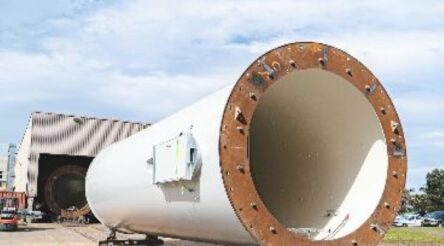Australia’s exports at risk – study

Australia’s economic resilience is at risk not so much because of a focus on China as a market, but because of the small number of commodities that we sell, according to a new study.
The study, by UTS, Sydney Professors James Laurenceson and Roy Green, and Dr Phillip Toner of Sydney University compared Australia’s exports to other high-income, medium-size peer economies, including Canada, France, the UK, Switzerland, the Netherlands, the Republic of Korea and Taiwan.
It found that it has only been since 2020 that China’s share of Australia’s exports was out of step with other nations.
In 2020 41 percent of Australian goods exports went to China, largely because of the high price for iron ore, which is a temporary phenomenon.
The researchers said: “Having a top market that accounts for between 25-30 percent of total goods exports is found to be par for the course amongst the peer group over the period of analysis.
“Australia mostly conforms to this benchmark.”
However the degree of product concentration found in Australia’s goods export basket mark it as an outlier.
In 2020, commodities accounted for more than 80 percent of total Australian goods exports – eight times the peer average.
The flip-side was the share of manufactures fell to just 15 percent compared with a peer average of 82 percent.
“Aside from being heavily weighted towards primary goods, Australia’s goods export basket was also distinguished by a lack of complexity.
“In 2020, 98 percent of Australia’s primary goods exports were in unprocessed form, compared with a peer average of 42 percent.
“The share of simply transformed manufactures (STMs) in total manufactured goods exports stood at 30 percent, compared with a peer average of 12 percent.”
The researchers said the surge in the value and share of primary goods in Australia’s goods export basket, particularly unprocessed ones, reflected a rational response to leverage Australia’s natural factor endowments to benefit from strong global demand.
“As product concentration increased, the resilience of Australia’s export basket was negatively impacted.”
Changes in Australia’s export mix are interdependent with the domestic industrial base.
Spurred by strong overseas demand, mining has grown from seven percent of value-added output in 1985 to 12 percent today, making it the largest single sector.
“The counterpart of the increased prominence of mining in the industrial base has been a relative shrinking of manufacturing.
“Australia now has the lowest share of manufacturing amongst peers by a considerable margin.
“The implications for broader economic resilience are more concerning as, for example, sovereign manufacturing production capacity has been eroded.
“There have also arguably been adverse implications for overall productivity growth and income inequality.”
Picture: UTS, Sydney
Subscribe to our free @AuManufacturing newsletter here.
@aumanufacturing Sections
Analysis and Commentary Awards Defence Manufacturing News Podcast Technology Videos










